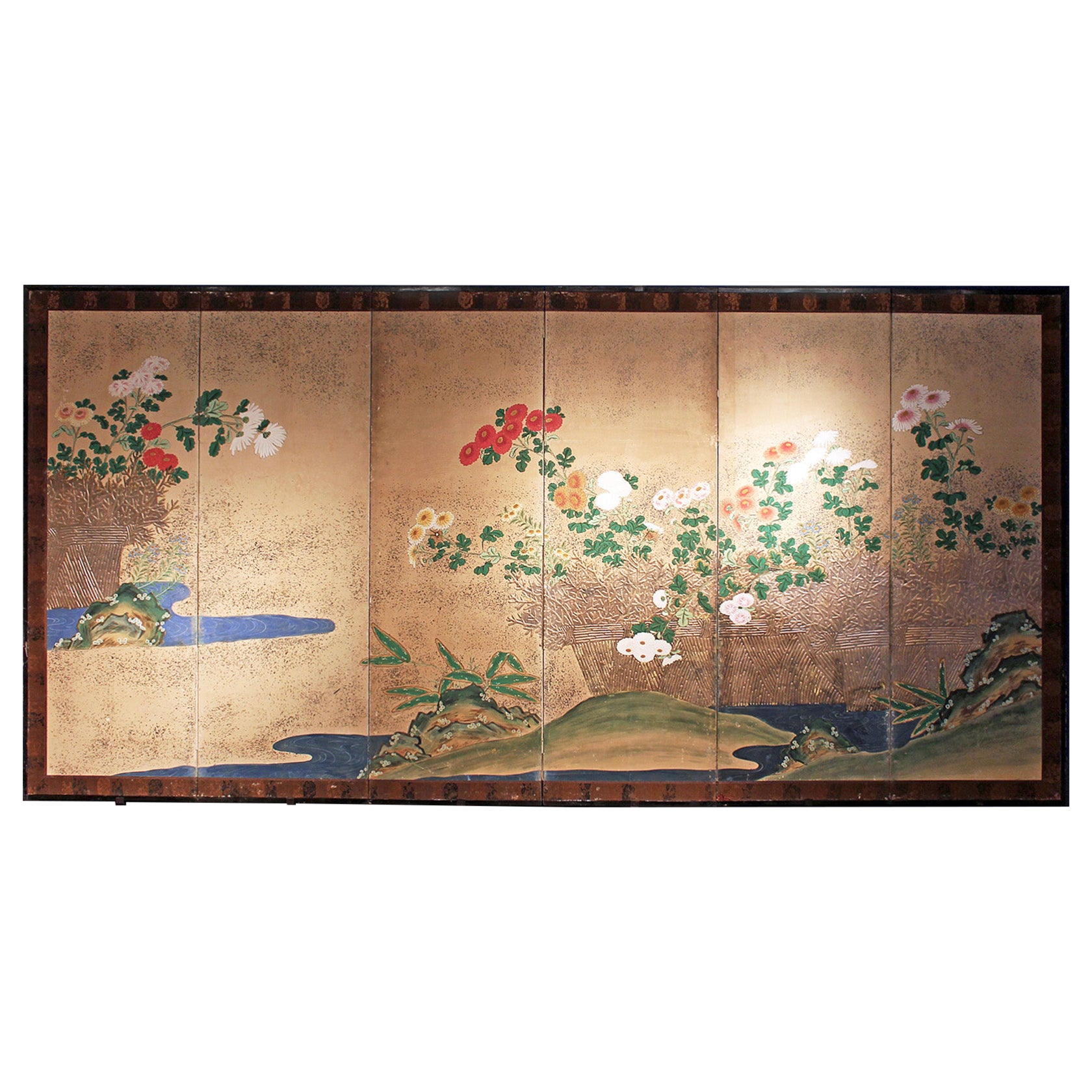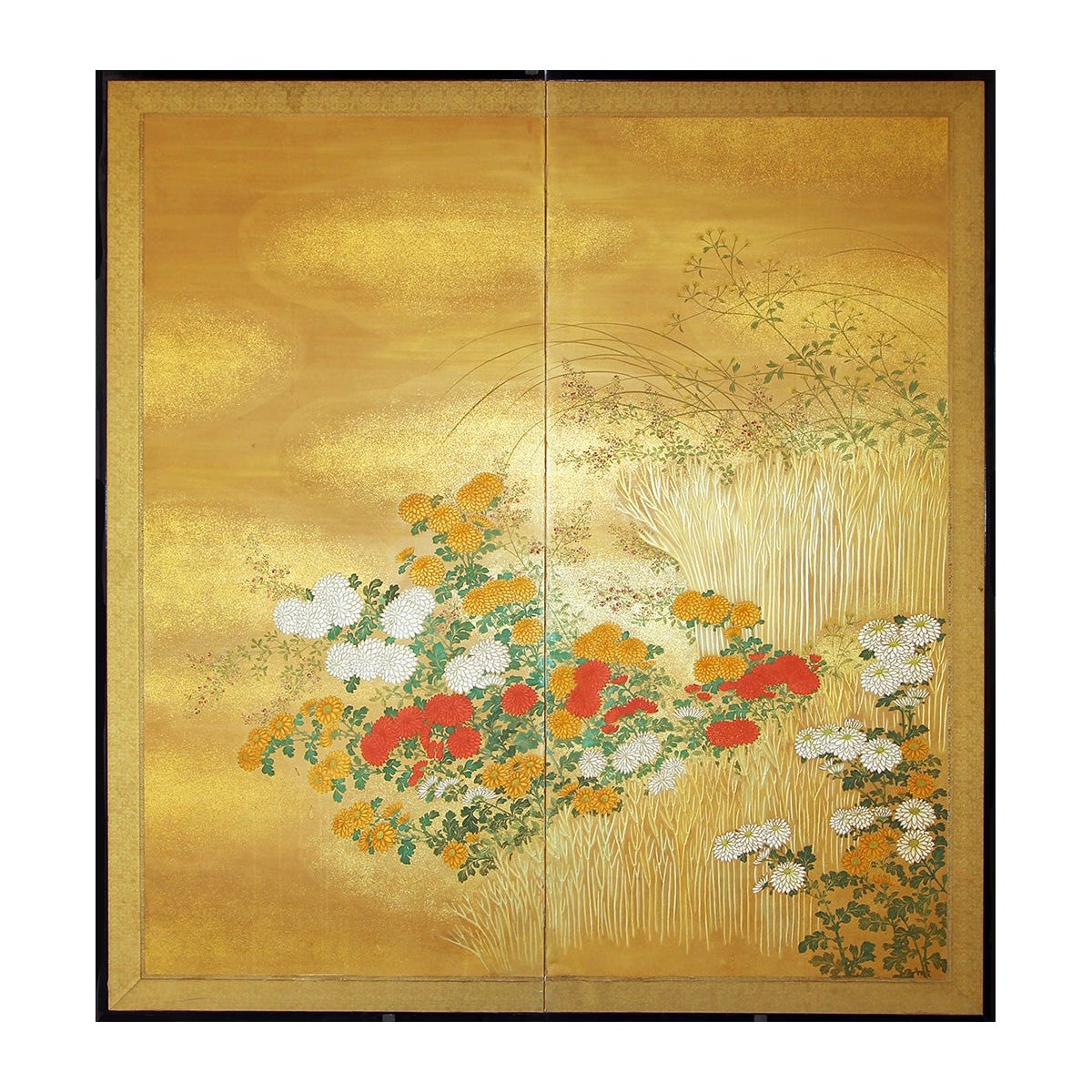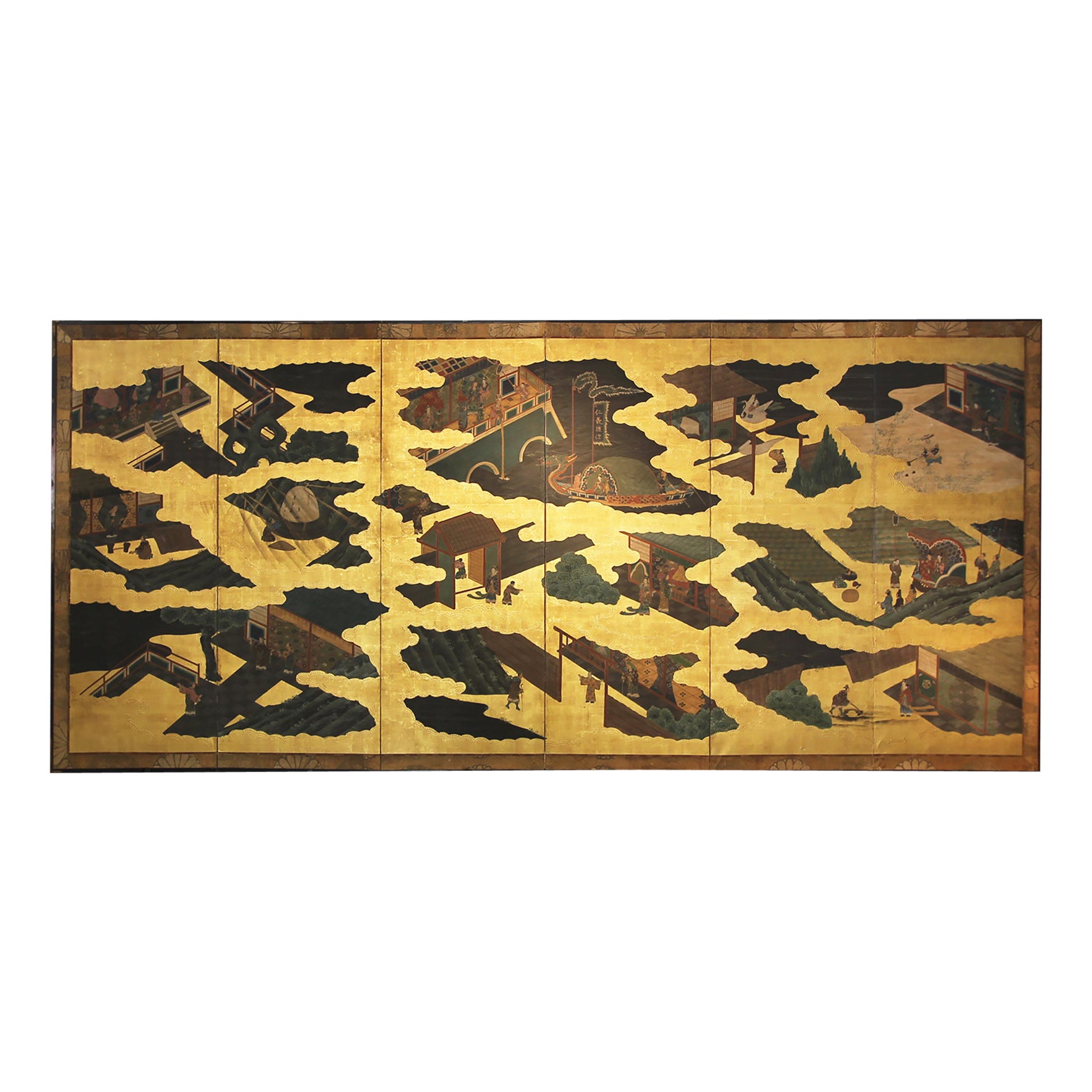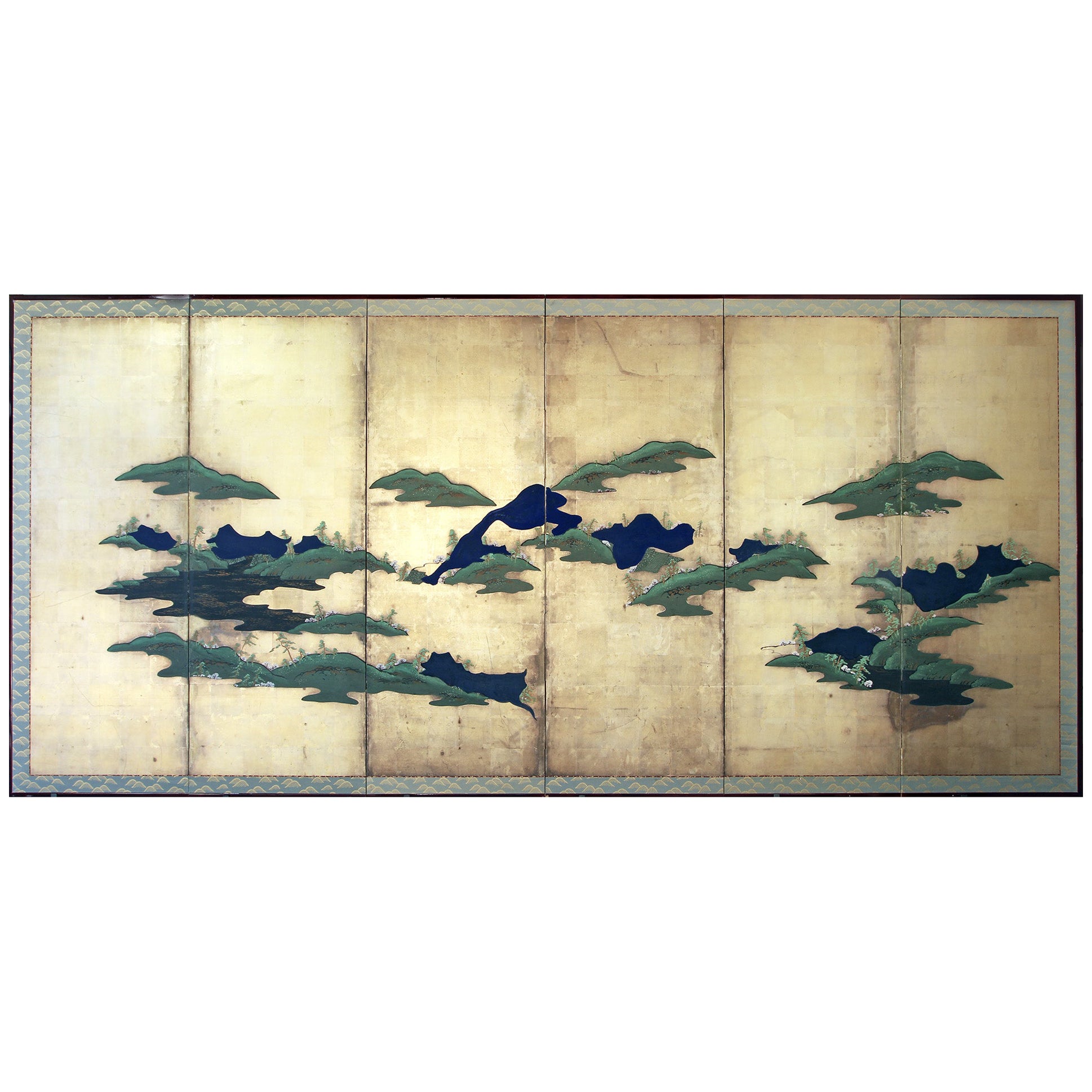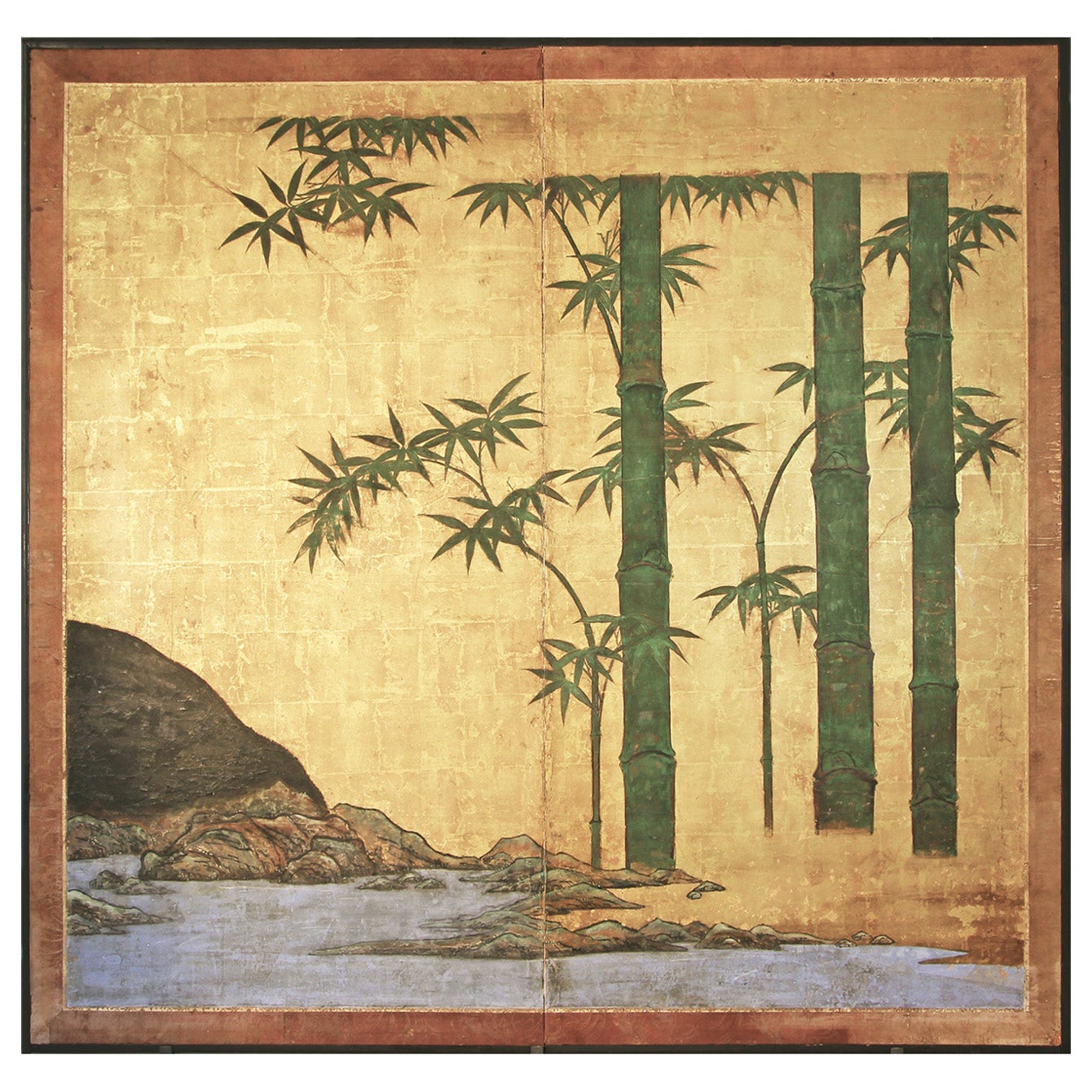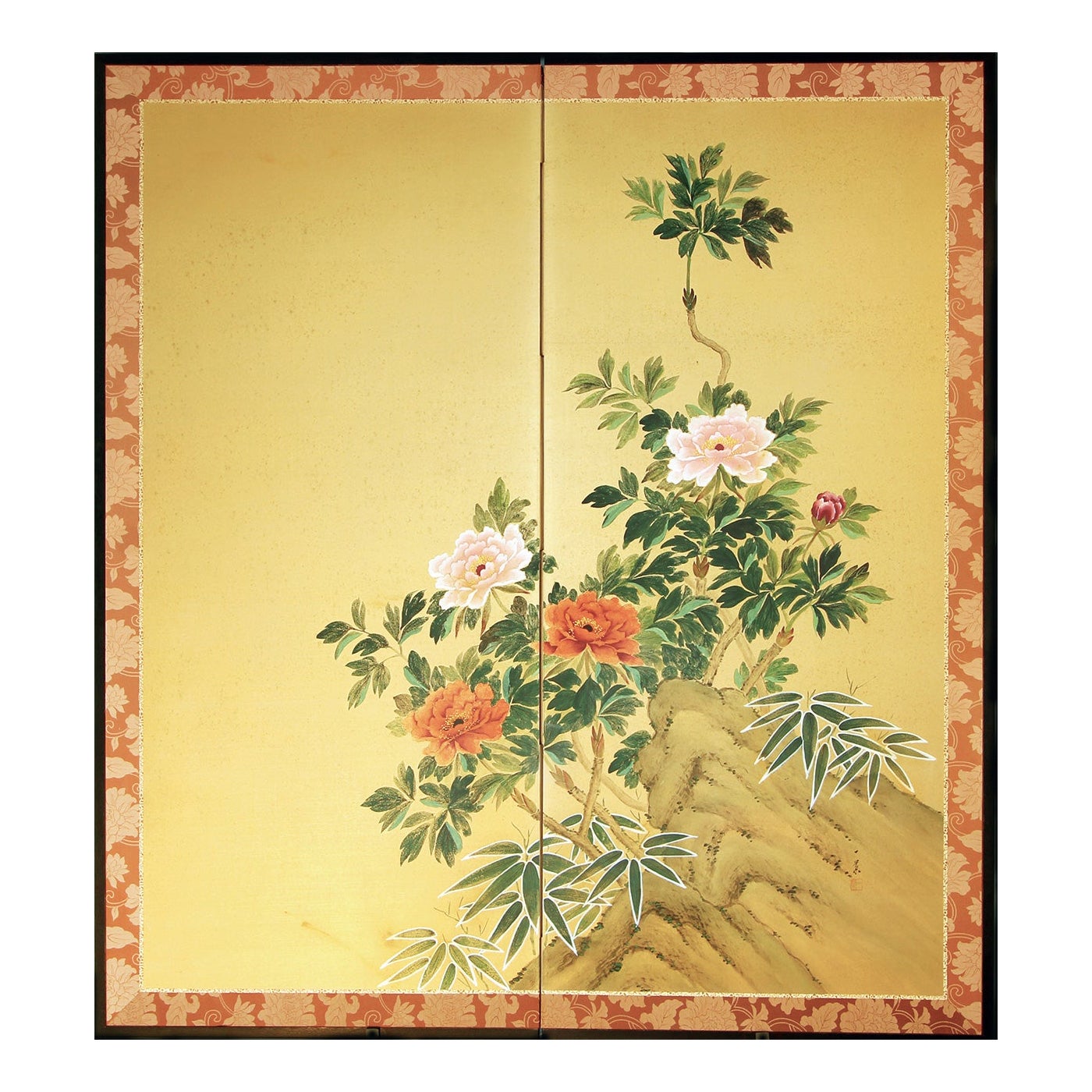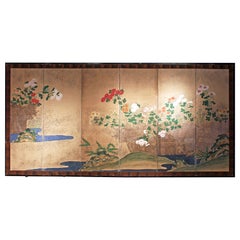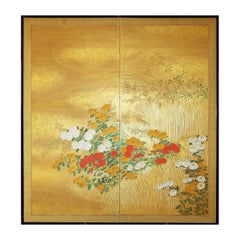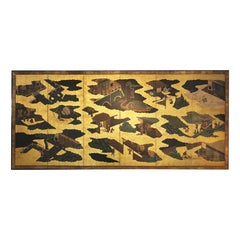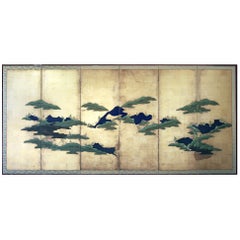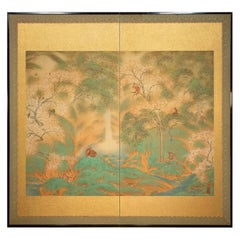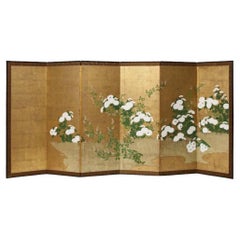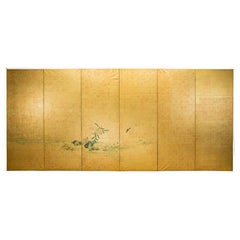Items Similar to Paravento Giapponese a sei pannelli su foglia d'oro.
Want more images or videos?
Request additional images or videos from the seller
1 of 8
Paravento Giapponese a sei pannelli su foglia d'oro.
$30,024.66
£22,113.10
€25,000
CA$40,846.20
A$45,389.14
CHF 23,784.39
MX$556,616.91
NOK 303,356.06
SEK 285,386.24
DKK 190,321.16
Shipping
Retrieving quote...The 1stDibs Promise:
Authenticity Guarantee,
Money-Back Guarantee,
24-Hour Cancellation
About the Item
Paravento giapponese a sei pannelli , opera di un pittore della prima metà del 19° secolo, di scuola Rinpa.
Sei pannelli dipinti con inchiostro su foglia oro e "gofun" su carta vegetale.
Rinpa è una delle maggiori scuole storiche della pittura giapponese. Lo stile fu consolidato dai fratelli Ogata Korin (1658–1716) e Ogata Kenzan (1663–1743).
Questo paravento ha un design molto pulito che lascia molto spazio allo splendido paesaggio dorato. Le condizioni di conservazioni sono molto buone e le cerniere dei pannelli sono robuste.
Viene fornito piatto e puoi appenderlo facilmente con i nostri ganci.
Lucio Morini garantisce l'autenticità e la provenienza dell'opera. La serietà dell'antiquario è certa grazie alla lunga esperienza di oltre 40 anni di attività al servizio di numerosi clienti in Italia e nel mondo.
- Creator:Japanese Studio (Artist)
- Dimensions:Height: 68.12 in (173 cm)Width: 146.86 in (373 cm)Depth: 0.79 in (2 cm)
- Style:Edo (Of the Period)
- Materials and Techniques:
- Place of Origin:
- Period:
- Date of Manufacture:1830 circa
- Condition:Wear consistent with age and use.
- Seller Location:Brescia, IT
- Reference Number:1stDibs: LU5628237922412
About the Seller
5.0
Recognized Seller
These prestigious sellers are industry leaders and represent the highest echelon for item quality and design.
Gold Seller
Premium sellers maintaining a 4.3+ rating and 24-hour response times
Established in 1981
1stDibs seller since 2021
20 sales on 1stDibs
Typical response time: 2 hours
- ShippingRetrieving quote...Shipping from: Brescia, Italy
- Return Policy
Authenticity Guarantee
In the unlikely event there’s an issue with an item’s authenticity, contact us within 1 year for a full refund. DetailsMoney-Back Guarantee
If your item is not as described, is damaged in transit, or does not arrive, contact us within 7 days for a full refund. Details24-Hour Cancellation
You have a 24-hour grace period in which to reconsider your purchase, with no questions asked.Vetted Professional Sellers
Our world-class sellers must adhere to strict standards for service and quality, maintaining the integrity of our listings.Price-Match Guarantee
If you find that a seller listed the same item for a lower price elsewhere, we’ll match it.Trusted Global Delivery
Our best-in-class carrier network provides specialized shipping options worldwide, including custom delivery.More From This Seller
View AllSix-Panel Japanese Screen
By Japanese Studio
Located in Brescia, IT
Six-panel screen of Rinpa school, painted with mineral pigments and gofun on vegetable paper and silver leaf.
Category
Antique Early 19th Century Japanese Edo Paintings and Screens
Materials
Silver Leaf
Two-panel screen of " Rinpa School"
By Japanese Studio
Located in Brescia, IT
Floral scene of a Rimpa School garden with polychrome chrysanthemum flowers.
Two-panel screen painted in pigment on gilded rice paper of beautiful size and well preserved.
Bold color...
Category
20th Century Japanese Showa Paintings and Screens
Materials
Gold Leaf
Six-panel gold leaf screen
By Japanese Studio
Located in Brescia, IT
Large Japanese six-panel screen, ink, color, gold, and gold leaf on paper, depicting three scenes from Genji monogatari (The Tale of Genji), the vignettes punctuated by raised golden...
Category
Antique Early 19th Century Japanese Edo Paintings and Screens
Materials
Gold Leaf
$16,813
Paravento giapponese a sei pannelli dipinto su foglia d'argento
By Japanese Studio
Located in Brescia, IT
Paesaggio giapponese: paravento a sei pannelli dipinto a pigmenti minerali su foglia d'argento.
Elegante e moderno esempio di arte orientale senza figure uccelli o fiori.
Paravento b...
Category
Mid-20th Century Japanese Showa Paintings and Screens
Materials
Silver Leaf
Paravento Due Pannelli Bambù su Foglia d'Oro
By Japanese Studio
Located in Brescia, IT
Paesaggio giapponese della sciuola di Kano dei primi anni del XVIII° secolo a due pannelli con alberi di bambù. Pigmenti minerali e foglia d'oro su carta vegetale. Bordo in seta ne b...
Category
Antique Early 18th Century Japanese Edo Paintings and Screens
Materials
Gold Leaf
Japanese screen
By Japanese Studio
Located in Brescia, IT
Two-panel screen of Rinpa school painted with mineral pigments on silk and rice paper.
It depicts colorful peony flowers. This is the flower of spring, symbolizing success and pro...
Category
20th Century Japanese Showa Paintings and Screens
Materials
Silk, Paper
$7,085
You May Also Like
Japanese Six-Panel Screen, a Garden for All Seasons
Located in Hudson, NY
An imaginary garden with flowers from all seasons including spring lilies, summer hibiscuses, autumn chrysanthemums, and winter berries. Wild autumn grasses move in a soft breeze wit...
Category
Antique 1890s Japanese Meiji Paintings and Screens
Materials
Gold Leaf
Paravento a due pannelli con animali immersi in un paesaggio naturale
Located in Milano, IT
Paravento a due pannelli in seta, su cui scimmie, cervi e uccelli animano una scena ambientata in una foresta lussureggiante, tra rami intrecciati e un corso d’acqua, al cui centro s...
Category
Early 20th Century Japanese Paintings and Screens
Materials
Paper
Kiku to Hagi Byobu, Rinpa School Style, Edo Period.
Located in Point Richmond, CA
A Chrysanthemum and Bush Clover painting on gold leaf six-panel folding screen, painted with clusters of leafy green chrysanthemum plants with white blossoms having moriage relief petals of gofun growing amidst pink blossoming bush clover within a bunched bush clover garden fence rendered in lighter gold relief, all on a background entirely of rich gold leaf. These two flowers are symbolic of Japan and the autumn season. The classic patterned paper verso with a Naga Antiques...
Category
Antique Early 1800s Japanese Edo Paintings and Screens
Materials
Gold Leaf
A japanese folding screen decorated with a naturalistic scene
Located in Milano, IT
Byōbu folding screen, 屏風, six panels with gold leaf background, decorated with a naturalistic scene of elegant simplicity, depicting flowers and a stream.
The composition depicts a s...
Category
Antique Late 19th Century Japanese Paintings and Screens
Materials
Paper
$5,284 Sale Price
20% Off
Japanese Screen "the Song of Everlasting Sorrow"
Located in PARIS, FR
Six-panels screen depicting the exit from the city of a Chinese emperor on horseback and his concubine in a luxurious palanquin.
It may be a scene illustrating the poem The Song of Everlasting Sorrow (Chang hen ge, ???) written by Bai Juyi (772-846), which recounts the tragic love story between the emperor Ming Huang (also known as Tang Xuanzong, 685-762) and his favorite concubine, the beautiful Yang Guifei...
Category
Antique Late 17th Century Japanese Paintings and Screens
Materials
Silk, Wood, Paper
Elegant Six-Panel Japanese Screen, 1920s
Located in Cesena, FC
Elegant Six-Panel Japanese Screen, 1920s
Fascinating 1920s screen with details of fine Japanese workmanship. The screen, composed of six lacquered panels, rests on bracket feet with...
Category
Vintage 1910s Japanese Screens and Room Dividers
Materials
Brass
More Ways To Browse
Edo Screen Gold
Japanese Screen Rinpa
Ogata Korin
Ogata Kenzan
Wood Crane
Japanese Folding Screen Screen
China Silk Panels
Chinese Silk Panel
Meiji Silk
Japanese Screen Bamboo
Large Chinese Screens
Japanese Insect
Chinese Lattice
Chinese Qing Dynasty Paintings
Crane Panel
Antique Hand Painted Japanese China
Japanese Cherry Tree
Japanese Silk Painting 20th Century
